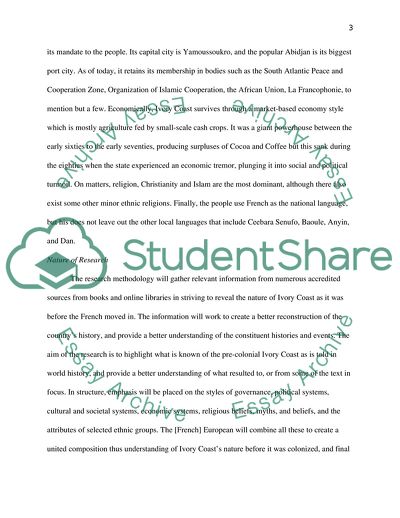Cite this document
(Pre-Colonial Ivory Coast Research Paper Example | Topics and Well Written Essays - 2500 words, n.d.)
Pre-Colonial Ivory Coast Research Paper Example | Topics and Well Written Essays - 2500 words. https://studentshare.org/history/1811220-pre-colonial-societyhistory-of-the-ivory-coast-in-africa
Pre-Colonial Ivory Coast Research Paper Example | Topics and Well Written Essays - 2500 words. https://studentshare.org/history/1811220-pre-colonial-societyhistory-of-the-ivory-coast-in-africa
(Pre-Colonial Ivory Coast Research Paper Example | Topics and Well Written Essays - 2500 Words)
Pre-Colonial Ivory Coast Research Paper Example | Topics and Well Written Essays - 2500 Words. https://studentshare.org/history/1811220-pre-colonial-societyhistory-of-the-ivory-coast-in-africa.
Pre-Colonial Ivory Coast Research Paper Example | Topics and Well Written Essays - 2500 Words. https://studentshare.org/history/1811220-pre-colonial-societyhistory-of-the-ivory-coast-in-africa.
“Pre-Colonial Ivory Coast Research Paper Example | Topics and Well Written Essays - 2500 Words”. https://studentshare.org/history/1811220-pre-colonial-societyhistory-of-the-ivory-coast-in-africa.


